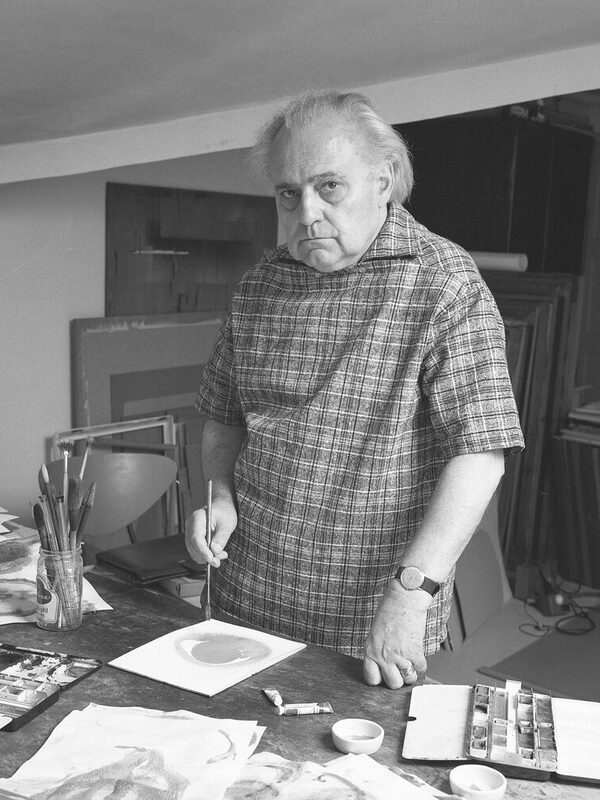Altripp, Alo (born Friedrich Schlüßel)
Altripp, Alo (born Friedrich Schlüßel)
Painter, graphic artist, draughtsman
born: 25.09.1906 in Altrip (Rhine)
died: 16.01.1991 in Wiesbaden
Altripp attended the Kunstgewerbeschule in Mainz from 1920 (or 1921) to 1924 and was taught commercial art and decorative painting. He also studied in Munich and Dresden.
In 1928/29, he took up a position as a theater painter at the Prussian State Theater in Wiesbaden. Here he initially created works in the New Objectivity style, including still lifes with glass bottles and artistic reflections, but also landscapes and architectural views such as the dramatically illuminated plaster factory in the painting "Barriere am Gipswerk" (Barrier at the Plasterworks) in the Wiesbaden Museum (1928).
Like his fellow painter Otto Ritschl, Altripp did not stop at New Objectivity, but left representational painting behind in the course of the 1930s. Experimenting throughout his life, he initially created surreal paintings with floating figures such as "Weltwanderer" (1931), "Jongleur" (1932), "Ahriman" (1933) and "Medizinmann" (1935), as well as works on paper in which he used stencils and applied the paint using a spray technique. Friendship and fruitful exchanges with the ailing Alexej von Jawlensky helped both of them to endure the Nazi era. In 1934/35, Altripp translated his new experiences of light into a series of monotypes in white and black and, from 1936, also into oil paintings. He used palette knife and chisel to bring out bright colors under dark surfaces. He used trips to Switzerland between 1936 and 1939 to deepen his anthroposophical knowledge at the Goetheanum in Dornach and to visit Paul Klee in Bern.
During the Second World War, he was drafted to Limburg an der Lahn (1940-43). From 1943-45 he worked as a technical draughtsman at Opel in Rüsselsheim and after the end of the war until 1949 as a draughtsman at the Central Collecting Point in Wiesbaden. His friendship with its director, the American art protection officer Walter I. Farmer (1911-1997), led to a scholarship from the Barnes Foundation in Merion, Pennsylvania.
Altripp taught at the Werkkunstschule Wiesbaden from 1951-71. His lively chalk drawings of the 1950s once again show the dynamism to which he was able to heighten his compositions. Travels abroad led him to new experiences of light, which he processed in his colorful watercolors from the 1960s until his death.
Altripp was a member of the Freie Künstlerschaft Wiesbaden, founded by Ritschl in 1925, and from 1954 until his death a member of the Pfälzische Sezession, founded in 1946. In 1976, he was awarded the Max Slevogt Medal of the State of Rhineland-Palatinate.
His grave is located in the Südfriedhof cemetery.
Literature
Suhr, Norbert: In memory of Alo Altripp (1906-1991). Berthold Roland (ed.), Mainz 1991.
Fäthke, Bernd: Alo Altripp - Von Farben, Formen und Nichtfarben, Galerie Draheim Wiesbaden (ed.), Wiesbaden 2009.
